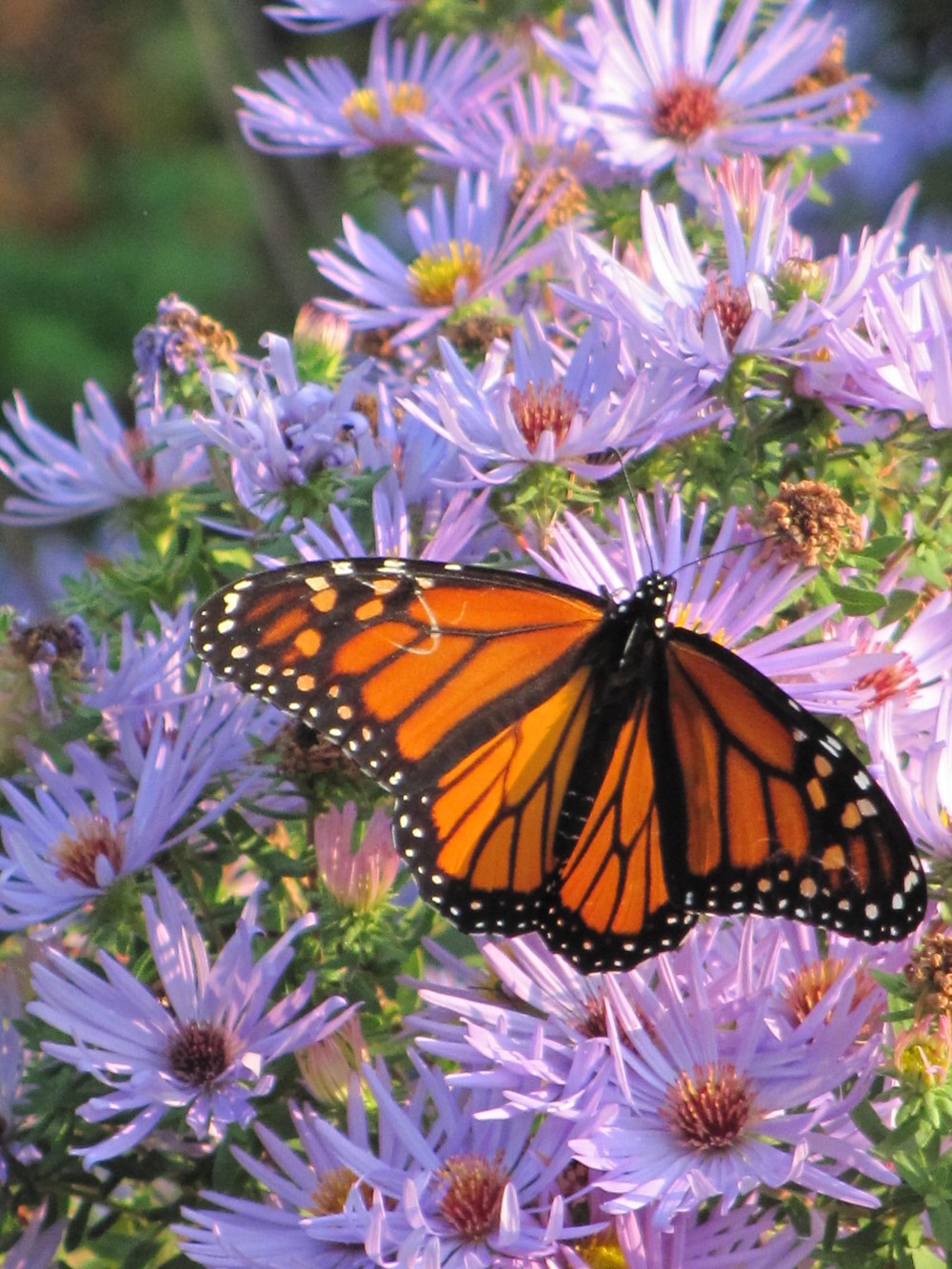Butterflies do not only need flower nectar to exist. Their caterpillars need host plants.

Photo credit: Holly List
In planning your garden this year, consider adding milkweed, parsley, and dill to add beauty to your garden while also helping the pollinators. Many insects including butterflies are in a precipitous decline due to over-development and insecticides. Native meadows are disappearing at a rapid rate in our area due to warehouse and housing construction. Nationwide, on December 15, 2020, the U.S. Fish and Wildlife Service announced that the monarch butterfly is a candidate for the Endangered Species Act.
You can make a difference in your yard by planting these three plants. Milkweed attracts the Monarch and other butterflies, and dill and parsley are both excellent food sources for the Eastern Black Swallowtail young.
For butterflies, there are 2 types of plants. Nectar plants (the flowers have nectar) typically feed a wide variety of adult butterflies. Host plants (the leaves) however feed the butterfly young, caterpillars. Most caterpillars have evolved to eat specific types of plants. If those plants aren't available, they die - they cannot metabolize other plants. For example, the butterfly bush (Buddleia davidii) often seen at plant nurseries has spectacular blooms and nectar but is non-native and invasive. Most native American caterpillars cannot feed on the plant and die if the eggs are laid on the butterfly bush. Help our native environment and plant host plants instead.
The common milkweed (Asclepias syriaca) is a perennial native American plant named for the milky white sap. Used by Native Americans as both a medicine and food source, the species is named for the Greek god of medicine, Asclepias. Monarchs and milkweed have evolved together. It is the only food source for the Monarch caterpillars, which thrive on this plant. Flowering from June to August, the fragrant pink flower clusters smell like lilies. The plant grows 3 to 5 feet with a spread of one foot, and thrives in dry, sunny locations. Seed pods form: in autumn the pods open and seeds disperse on silken parachutes. Milkweed is deer resistant and perennial. The U.S. Fish and Wildlife Service encourages milkweed planting. The agency has issued several bulletins which are interesting to read.
The common milkweed grows tall and straight while other varieties are bushy and even shrublike. There are over 100 species of milkweed native to the United States and cultivars have been developed by nurseries. Showy Milkweed (Asclepias speciosa) has pinkish white to pinkish purple blooms, growing 1 to 3 feet in height and 1 to 2 feet wide. It is drought tolerant, and low maintenance. Ice Ballet (Asclepias incarnata) has clusters of small white fragrant flowers. It grows 3 to 4 feet tall with a spread of 2 to 3 feet. It grows in medium to wet soil in full sun. Hello Yellow Butterfly Flower (Asclepias tuberosa) is bright yellow, growing 2 feet tall and 1 to 2 feet wide. Butterfly Weed (Asclepias tuberosa) has bright orange flower clusters. The plant grows 1 to 3 feet tall and spreads 2 to 3 feet tall.
Milkweed can be sown in the spring from seed and plants can be purchased as well.
While milkweed plants are not sold by typical nurseries, use your internet browser to find the plants. I typed "Milkweed York PA" into my browser and found many sources for both plants and seeds.
Plant the herbs dill and parsley to attract the Eastern Black Swallowtail. This spectacular native butterfly with a 3- inch wingspan has velvety black and blue wings with orange dots and yellow accents. The cream or yellow-colored eggs mature into 2- inch green caterpillars with greenish-black stripes and yellow dots.
Dill (Anethum graveloens) is very aromatic and often used to flavor salmon, potato salad, and soup, as well as pickling. The flowers are attractive in bouquets. These annual plants grow 3 feet tall and spread wide 1 to 2 feet. Create a permanent bed by allowing dill to mature and self-seed. Dill should be planted in a permanent bed since it does not transplant easily due to the long taproot. You can plant new seeds every few weeks to ensure an ample supply all summer and to prepare for pickling season.
Parsley is rich in vitamins and minerals and adds beauty to both the vegetable and flower garden. There are several varieties, Italian Flat Leaf (Petroselinum neapolitanum) and Curly (Petroselinum crispum), growing 12 to 18 inches depending on the variety.
Parsley can be grown in pots if you have limited space.
Be sure to plant enough of both herbs to share with the caterpillars. Do not be upset if something is chewing your plants. You are helping to sustain the future environment!
Written by Anne Gillespie, Penn State Master Gardener of York County

